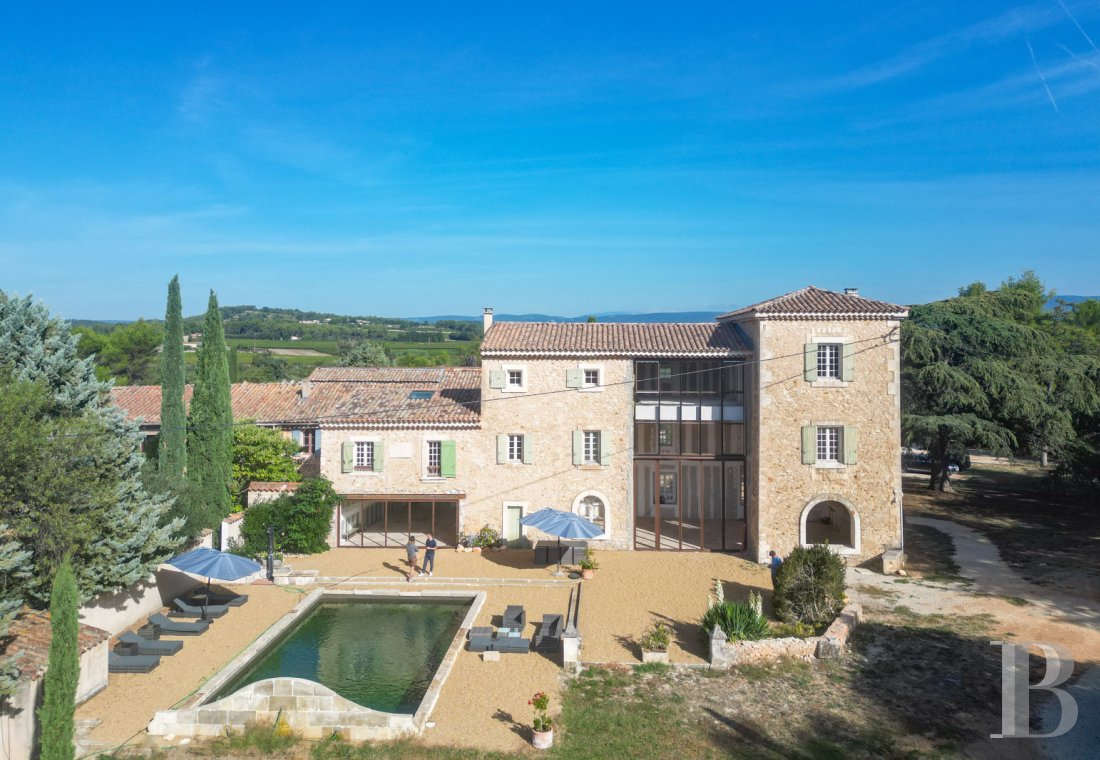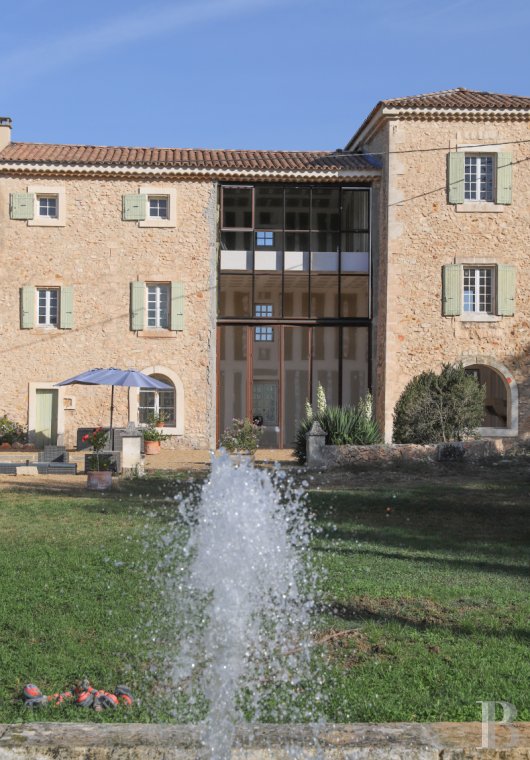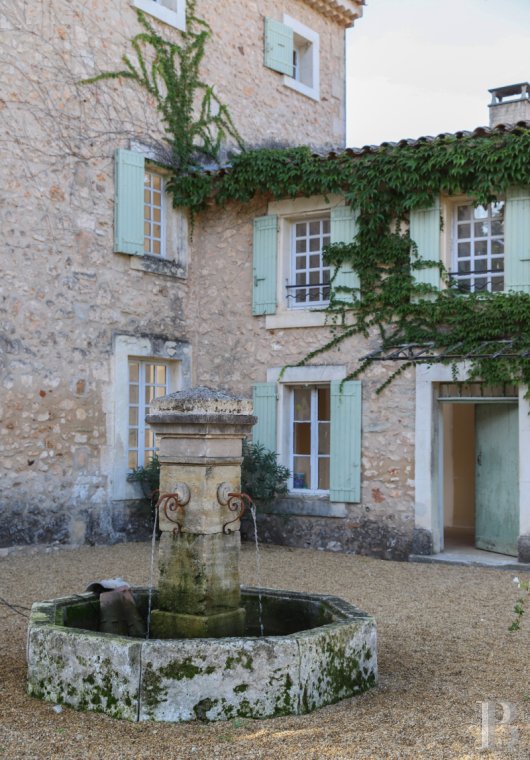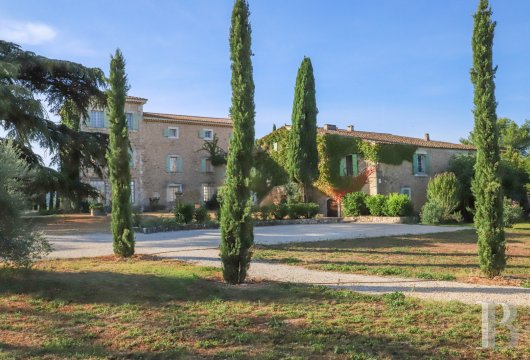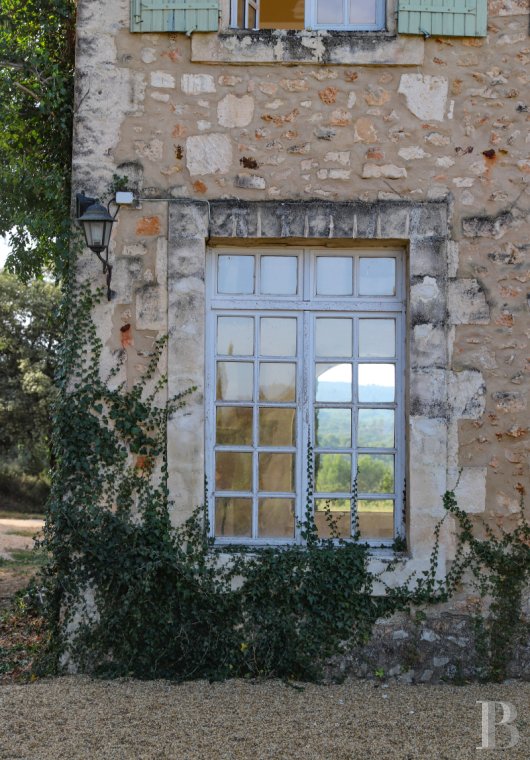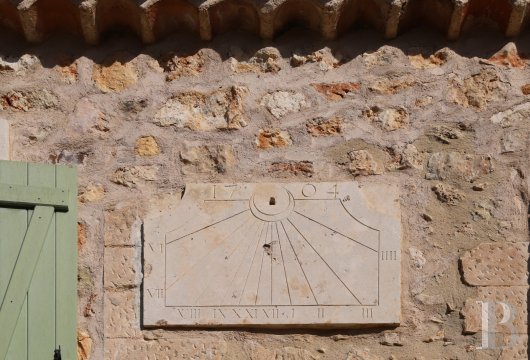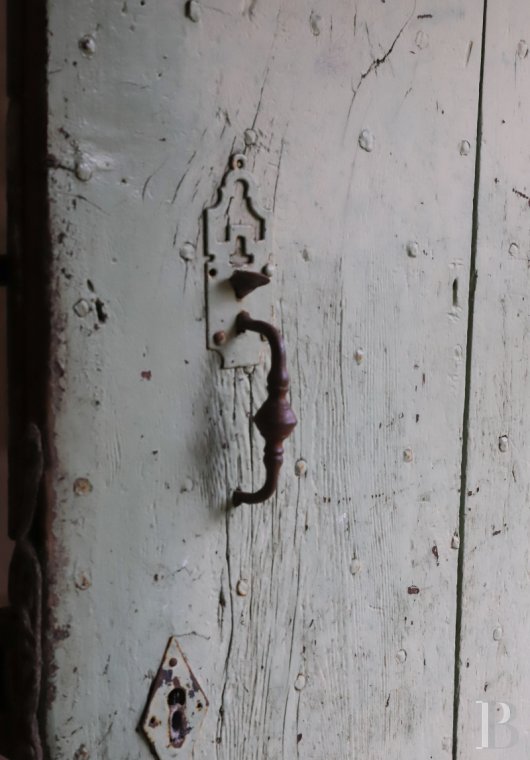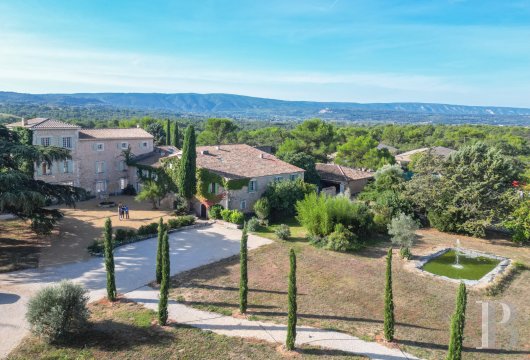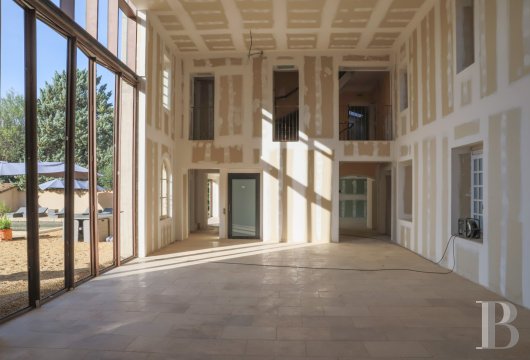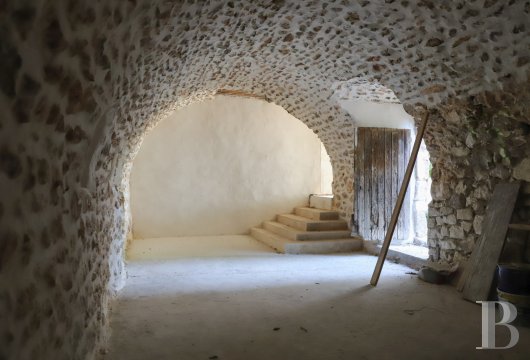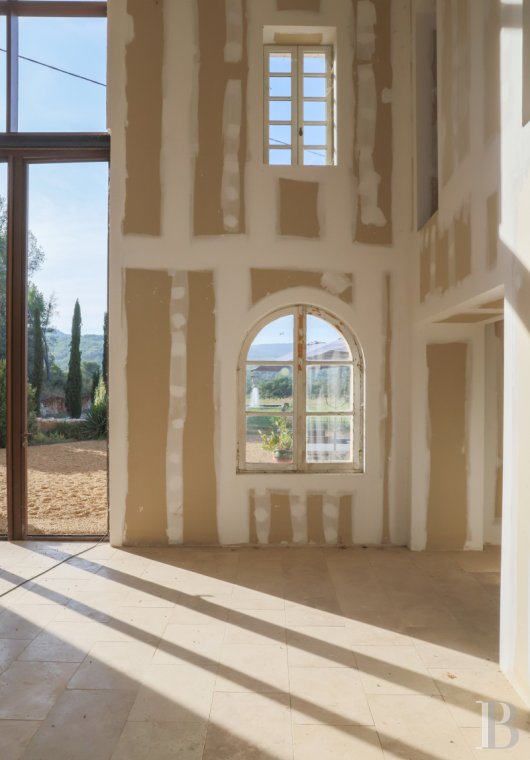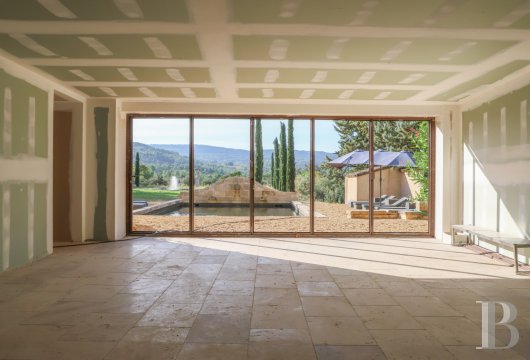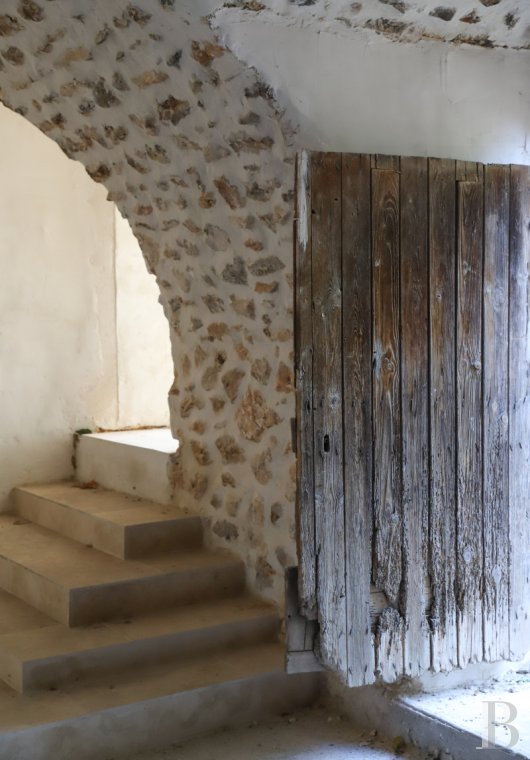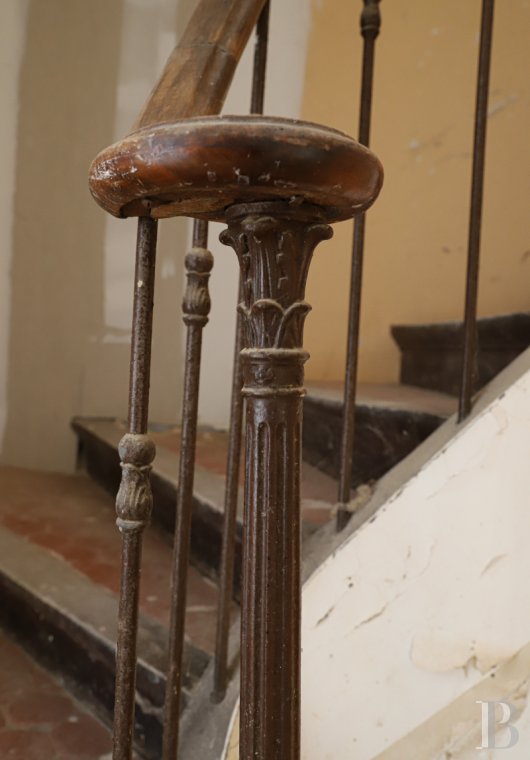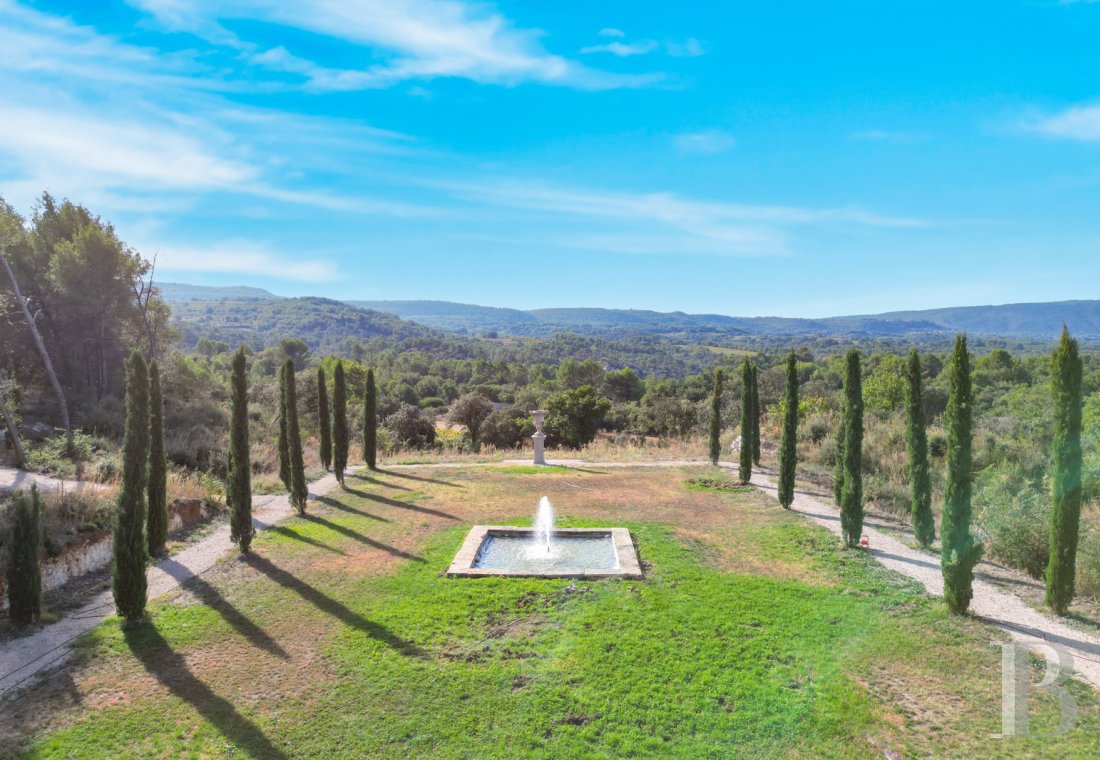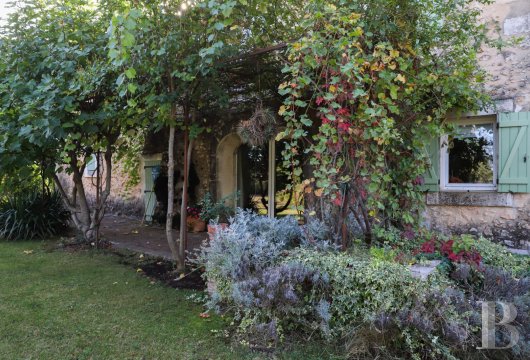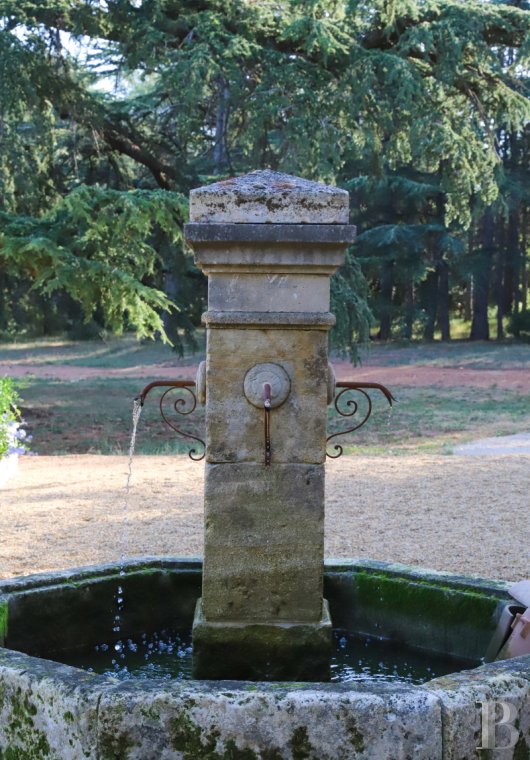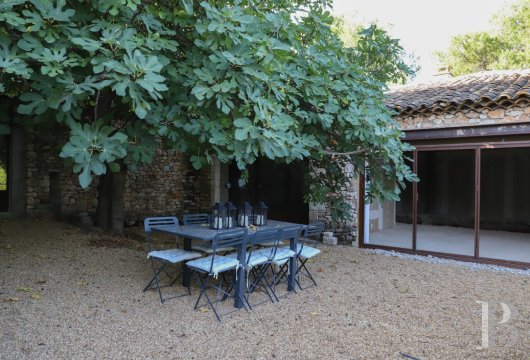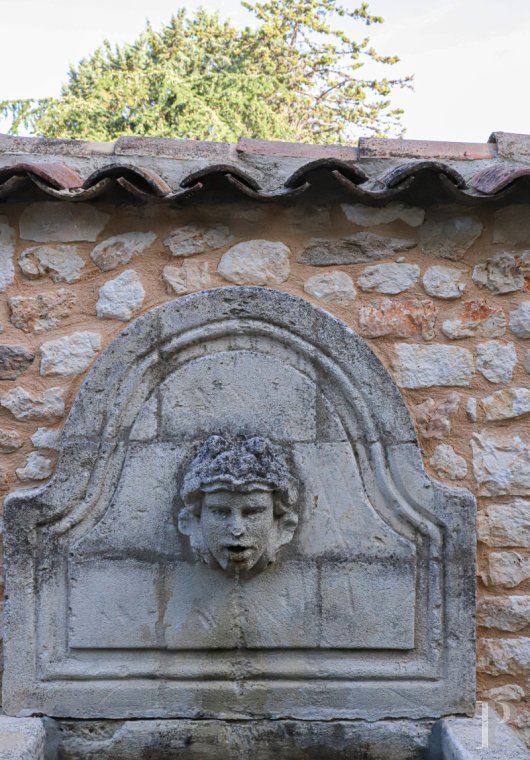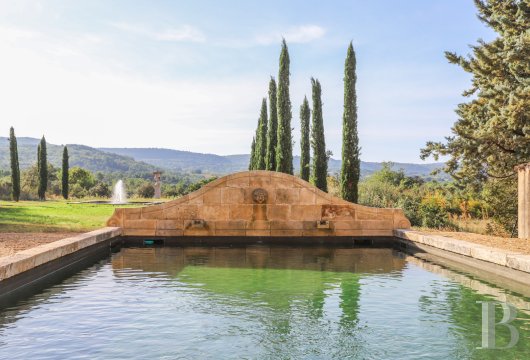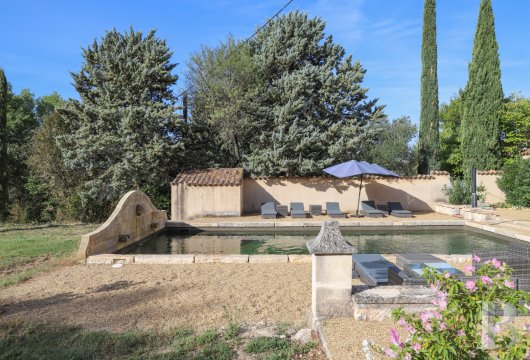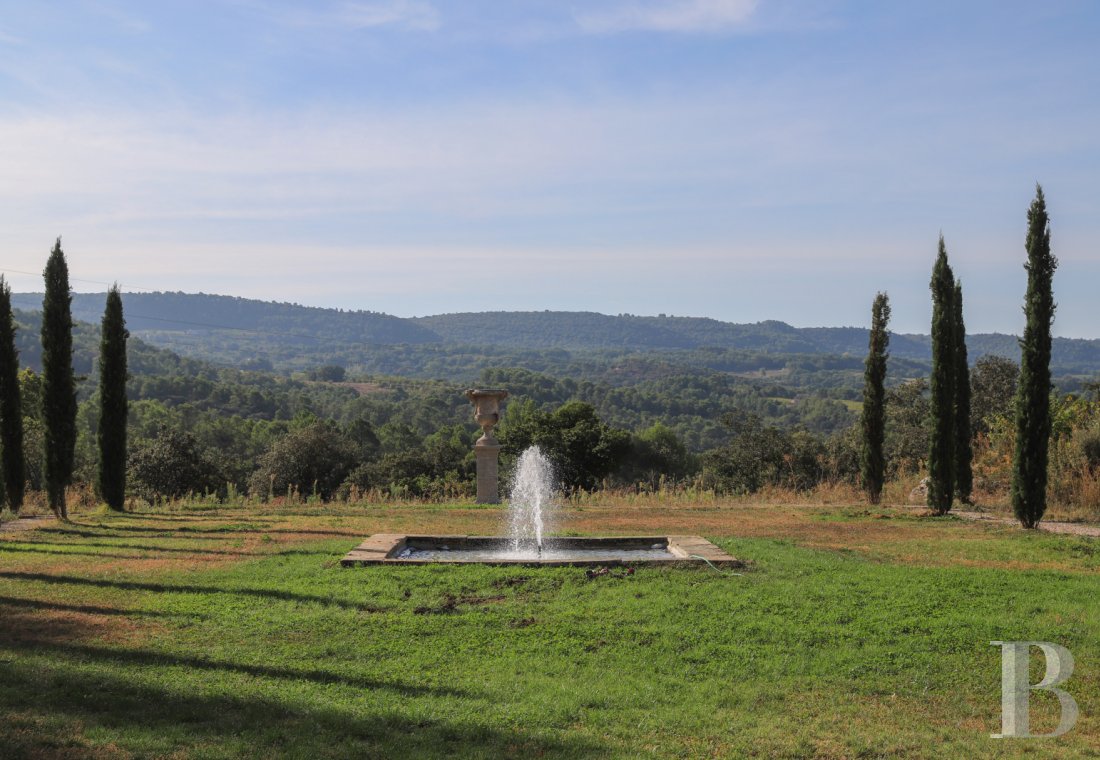4 ha of wooded grounds with views over the Luberon mountain range

Location
A short distance from the hilltop villages of Bonnieux, Gordes, Lacoste and Ménerbes, which have contributed greatly to the Luberon's fame and no longer need to be promoted. Today, the Luberon Regional Nature Park covers 185,000 hectares, spread over 78 civil parishes in the Vaucluse and Alpes-de-Haute-Provence regions. The backbone of this vast protected area is the Luberon massif, which stretches 75 km from west to east between Cavaillon and Forcalquier, reaching a peak of 1,125 m at Mourre Nègre.
The property is easily accessed from the main road between Apt and Avignon. A wide range of shops and services can be found in the nearby towns of Coustellet and Apt. 40 minutes from the A7 motorway, 1 hr 10 from Avignon TGV station, 1 hr 15 from Aix-en-Provence TGV station and 1 hr from Marseille-Marignane international airport.
Description
The former coaching inn dates back to 1704, erected following the creation of the "Ferme générale des postes" by the Marquis de Louvois, who was responsible for managing "the mail services, staging posts and horse-drawn carriages of the kingdom of France” under Louis XIV. Most of the facades are of roughly coursed stone from the Lacoste quarries, illustrating the building's utilitarian purpose.
One of the facades, however, is ochre rendered and contrasts with the others, suggesting that this part of the building was used for a more noble purpose and reserved for the local elite, while the exposed stone was left for the outbuildings.
This and other architectural features suggest that after 1873, the royal coaching inn was transformed into a Provence ‘bastide’ (country house), when such staging posts became obsolete as a result of the arrival of the railway, which exceeded the speed of the horse-drawn mail coach.
Although the current three storey building does not have all the features of a traditional Provence country house, the main structure features the square shape typical of such dwellings, topped by a four-pitched monk-and-nun tiled roof. Windows on all sides generously illuminate the interior, where almost all of the vast rooms boast ceiling heights of over 3 metres.
The recent, unfinished, renovation of the various parts of the building means that the design can be adapted to the next inhabitant’s vision and requirements. A long architectural structure, with one, two or four-pitched roofs, adjoins several outbuildings set at right-angles to the rear. The completed shell leaves it to the imagination of the future owners to use the spaces as they wish. The recent remodelling of the building has retained the clearly visible marks of its two previous lives.
On either side of the edifice, a garden with geometric features has been designed to reflect the harmony of the house's interior volumes within a carefully landscaped setting. To the south, a vast masonry pool adorned with sculptures creates a mirror image of the bastide.
The country house
Facing north-east to south-west, the current structure totals a floor area of around 1,200 m², comprising the original 600 m² of the main building and the 600 m² of former outbuildings, stables and "mazets” (huts), which are linked to the main building to the north-west. In the partially redesigned building complex, a number of bold architectural choices have been made, incorporating the many traces of the site's history while giving it a future-oriented dimension at the same time.
One example is the newly created spectacular ‘cathedral lounge’ of almost 100 m² in the main building, with an 18th century Lacoste stone fireplace and a ceiling height of 7 m, lit by a glass wall around 5 m wide and 7 m high. This type of glass wall - which was very rare in Provence in the past because of the need for protection from the sun - first appeared at the end of the 19th century in the studios of Parisian artists, before enjoying its heyday in the Art Nouveau or Art Deco style sitting rooms of wealthy residences. Since the 1990s, with the growing popularity of air-conditioning, these glass walls have been exported to all parts of the world. As a result, the 'cathedral lounge' is now an essential feature of luxury Swiss hotels and Californian residences alike.
The garden level
A square courtyard bordered at right angles by outbuildings and featuring a traditional fountain with an octagonal pool of Isle-sur-la-Sorgue dressed stone precedes the wooden entrance door on the north side of the bastide.
To the right of a vast hallway, the size of a hotel lobby, there is space for a service or passenger lift to the upper floors. Also on the right, a corridor leads to a vast dining room, seating around twenty, with a view of the outdoor swimming pool and the village of Bonnieux in the distance. It is extended to the west by a passageway leading to the vaulted kitchen gallery, scullery and cold room, all of which have yet to be finished.
The vast cathedral lounge with views of the Luberon massif is on the left. A long passageway leads to the future library or gym, opening onto an inner courtyard adorned with a wall fountain. This space provides access to the future sauna and two bedrooms, one of which connects directly to a massage room and indoor swimming pool. A pool has in fact been dug out on this level but has not yet been completed, just like the cold room next to the scullery.
A cellar can also be accessed from the garden level. Finally, the north-west wing has approx. 80 m² of living space, comprising a sitting room, kitchen and shower room on the first floor and three bedrooms and a shower room on the second.
The first floor
A service lift provides access to both floors and their potential thirteen bedrooms and bathrooms, which could easily be increased to fifteen. The first floor alone could contain nine bedrooms and bathrooms. These be reached via the service lift or an internal staircase, which starts near the library. All the bedrooms adjoin future bathrooms and lavatories.
A drawing room of around 20 m² completes the first floor. As on the lower level, none of the bedrooms are finished or furnished, with either the bare surfaces of plasterboard partitions or old wallpaper still covering the walls. However, there are three fully refurbished bedrooms echoing the living space on the garden level.
The second floor
Of the three storeys that make up the building, this is the least fitted out. Situated above the cathedral lounge, it covers almost the same floor area (approx. 100 m²) and includes a vast suite with a bedroom and a closet. Two further unfinished bedrooms complete this space.
The garden, parkland, ponds and pools
Reminiscent of the traditional formal French gardens, the one stretching along the length of the building is rather contemporary in style, with a geometric layout and a modernism that fits perfectly with the location. Embellished with sculptures and monumental Medici vases of limestone set on marble pedestals, it features flowerbeds with unexpected perspectives.
Various fountains embellish the grounds, from the courtyards to the private pine forest, all based on ancient Provençal models. The fountains create a welcome water feature on the sometimes rugged heights of the Luberon. The open-air swimming pool, measuring approximately 6 x 12 m, faces the southern horizon. A stone fountain carved after an 18th-century model feeds the pool with constantly rippling water. A beautiful work of art, made of water and trees, carefully created and bordered by 3 hectares of pine forest, protected from the risk of fire by a 100 m² reservoir to the east. Essentially made up of woodland, the grounds of the property are enclosed by fences.
Finally, to the north, a large driveway lined with Florence cypresses leads to a parking area with space for a large number of vehicles.
Our opinion
The current remodelling of this residence fully reflects the ambition that went into its luxurious, as yet incomplete development, where everything remains to be accomplished. Whatever their plans, the future inhabitants should have no trouble adapting the vast structure still in the making to fit their ideas. This is one of its main advantages, and a rare opportunity in a region as coveted as the Luberon, where properties for sale are generally 'ready to move into'. Everything in and around the country estate suggests the possibility of setting up an extensive hospitality business or residential property, such as a hotel - the bastide having already been used for this purpose and holding an operating licence - or a home for a large family in a natural environment of absolute tranquillity and breathtaking beauty.
4 500 000 €
Fees at the Vendor’s expense
Reference 491268
| Land registry surface area | 4 ha 27 a 1 ca |
| Main building surface area | 1200 m2 |
| Number of bedrooms | 13 |
| Number of lots | 1 |
NB: The above information is not only the result of our visit to the property; it is also based on information provided by the current owner. It is by no means comprehensive or strictly accurate especially where surface areas and construction dates are concerned. We cannot, therefore, be held liable for any misrepresentation.

